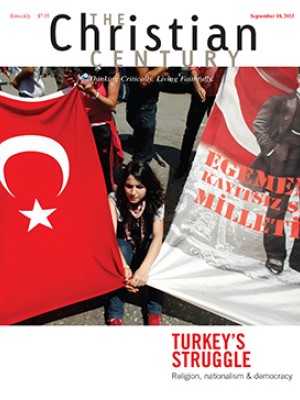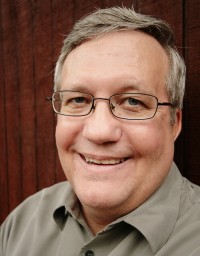The power of sisterhood

The novelist Curtis Sittenfeld, a graduate of the Iowa Writers’ Workshop, published one of my favorite books of recent years: American Wife. Based on the life of Laura Bush, with names and situations changed, American Wife traces one woman from her youth to her adulthood as the wife of a president.
Masterful at portraying both the personal and the political, Sittenfeld enthrallingly lifts the curtain before those in high office and those close to them. Since she writes primarily from the viewpoint of women, her book might be considered a woman’s book. But it would be a mistake to restrict it to that category and shoo away male readers. Like all accomplished fiction writers, Sittenfeld helps her readers get inside the lives of characters who may be very different.
Read our latest issue or browse back issues.
In her new book Sisterland, Sittenfeld continues writing about women but not only for women. It is the story of two sisters, Daisy and Violet, identical twins growing up in St. Louis. Both are gifted (or burdened) with psychic powers. With what they call their “senses,” they can glimpse the future.
Barely out of their toddlerhood, the girls dream about a disastrous fire. A few days later, a neighborhood house burns to the ground. Later, they have premonitions about a classmate dying. Upon meeting a person, they can sense that she has an eating disorder. In college, Daisy (who by then goes by her middle name, Kate) has a “gross feeling” about a sociology professor on the first day of class. She eventually learns that the professor was arrested for possessing child pornography.
The two sisters eventually respond differently to their senses. In middle school, Daisy/Kate joins some friends in playing with a Ouija board. She senses a malevolent presence and from that point on squelches and attempts to deny her senses. Violet (who goes by Vi as a grownup) takes the opposite path and embraces her senses. As an adult, she becomes a professional psychic.
For all the spice that these psychic abilities contribute to Sisterland, the book is about much more. It’s about the joys and travails of sisterhood, as Vi and Kate quarrel, take care of their widowed father and manage to maintain a bond. It’s also about marriage and motherhood, with the bulk of the book focused on Kate’s marriage to Jeremy Tucker and the drudgery and rewards of being a stay-at-home mom.
Late in the novel, Kate reflects: “There are, I have learned, so many gifts of motherhood, and so many sadnesses, and one of the sadnesses is the asymmetry of family experience: that in spite of all the daily nuisances . . . these years of children being little are the sweetest time in my life. And yet [for the children], these won’t be their best years. They’ll grow up and go away, they’ll find spouses and have sons or daughters, and no matter how much we loved them, they’ll probably recall their childhoods as strange and confusing, as all childhoods are. The happiest times of their lives, if they’re lucky, will be when they’re raising their own families.”
Sisterland also grapples with some hot-button issues. Nearing middle age, Vi enters into a lesbian relationship. Though Kate is sympathetic and accepting, she attempts to hide Vi’s new sexual status from their aged father.
Race is another theme. Kate and Jeremy are close friends with an interracial couple, Hank and Courtney Wheeling. Hank is a stay-at-home father, and with his daughter he daily meets Kate and her two small children for playtime at a neighborhood park. Through her friendship with the African-American Hank, Kate is sensitized to the wariness with which a black man is regarded in upscale suburban St. Louis. On one occasion, Kate sends her daughter with Hank and his own daughter to a local Target. Hank comes under suspicion because he has a white child accompanying him and is detained by the store cops.
The novel also deals with abortion. Courtney Wheeling gets pregnant with a Down syndrome child and aborts it, to Hank’s agony. Later, through a series of fraught circumstances, Kate considers abortion for herself. Contemplating the preciousness of her own one-year-old, she decides she could never have an abortion.
All these situations and themes are built around a plot that returns us to Vi’s and Kate’s psychic abilities. Vi predicts a major earthquake to occur in St. Louis on October 16, 2009. This brings her major media attention, including interviews on the Today show. It also heightens the tensions between the sisters, as Kate is embarrassed to be the sister of a highly visible psychic.
I won’t spoil the story. I will say only that an earthquake of sorts does occur, one that shakes Kate to her core and crowns this acute exploration of everyday life and family life in 21st-century America.






